How-To Guides
How to Clean a Washing Machine Detergent Drawer Properly?
AZparts Team
Updated on July 11, 2025
5 min read
Wondering how to clean a washing machine detergent drawer without damaging your appliance? Over time, detergent residue and mold can build up, causing odors and reducing wash quality. Regular cleaning keeps your washer fresh and efficient. AZParts will guide you step by step with expert tips and provide high-quality replacement parts to make the process easier and more effective.

1. How to Clean a Washing Machine Detergent Drawer
Over time, detergent, fabric softener, and mold can build up in your washer’s detergent drawer, leading to odors and poor performance. Cleaning it properly keeps your machine hygienic and extends its lifespan. Here's how to do it right.
1.1. Remove the Washer’s Detergent Drawer
Start by pulling the drawer out as far as it will go. Most models have a small release clip inside the softener or main detergent compartment. Press it gently while pulling the drawer straight out. Handle it carefully to avoid damaging the plastic rails or components.
Tip: Take note of any removable inserts or compartments so you can reassemble them correctly after cleaning.
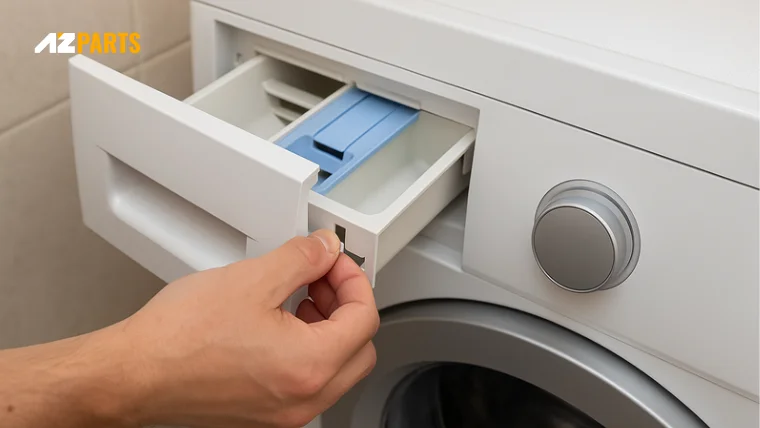
Remove the Washer’s Detergent Drawer (Source: AZParts)
1.2. Inspect the Detergent Cavity
Once the drawer is removed, check the inside of the detergent cavity (the compartment in the washer where the drawer slides into). You may find hidden mold, detergent sludge, and mildew. Use a flashlight if necessary to inspect deep corners and hard-to-see areas.
1.3. Spray the Detergent Cavity
Fill a spray bottle with a mixture of warm water and distilled white vinegar (1:1 ratio). Spray the inside of the cavity generously, focusing on areas with visible buildup. Let it sit for 5–10 minutes. Use a soft brush (like an old toothbrush or a narrow bottle brush) to scrub the inside thoroughly, paying close attention to seams and crevices.
Avoid using abrasive scrubbers or metal tools, which can scratch or damage the plastic.
1.4. Soak the Detergent Drawer
Place the drawer and any removable inserts in a basin or sink filled with hot water and 1 cup of distilled white vinegar. Soak them for at least 30 minutes. This will help loosen dried detergent and soften any mildew or residue stuck in the compartments.
You can also add a few drops of mild dish soap to help remove greasy or sticky buildup, especially in the softener compartment.
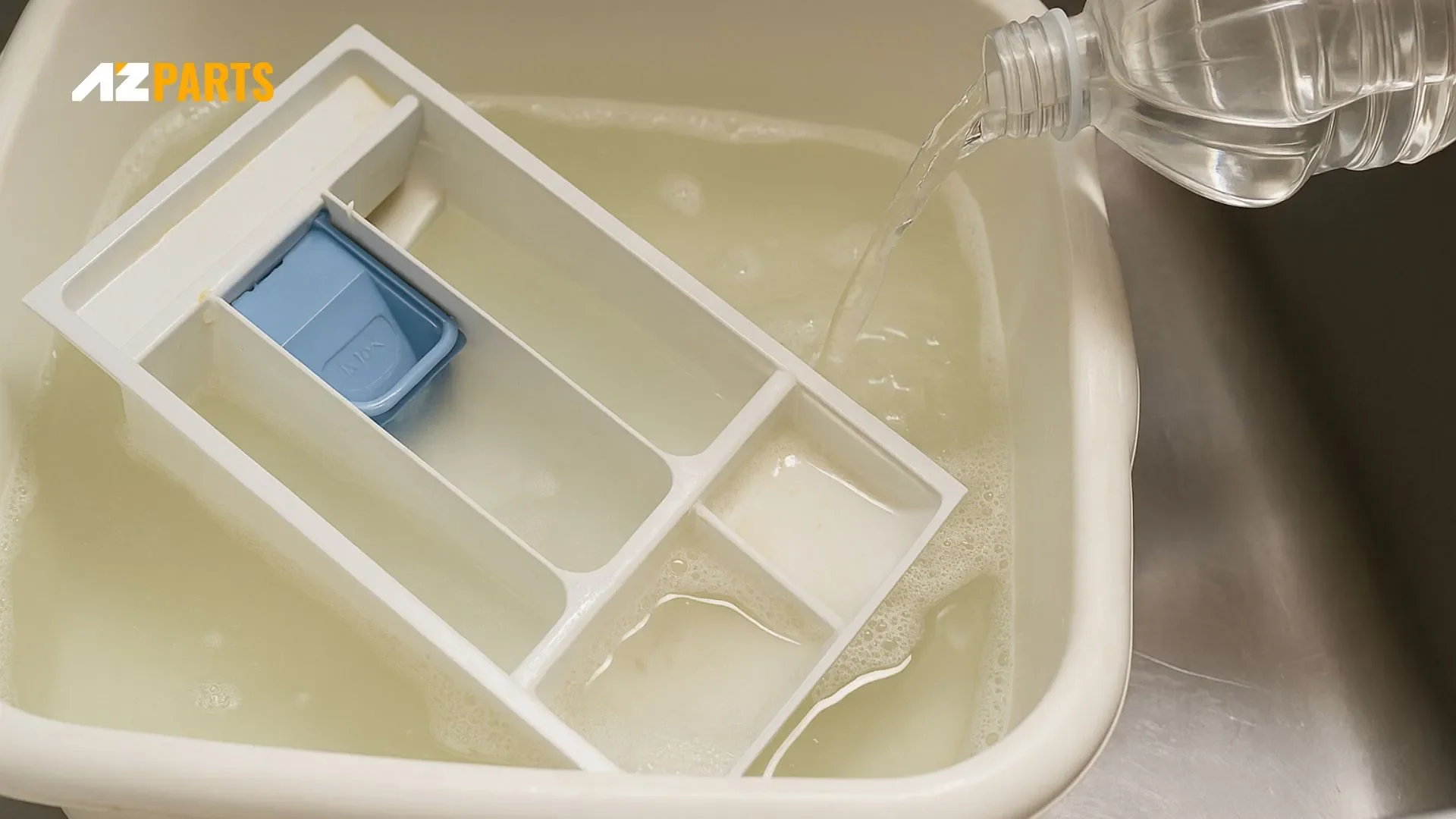
1.5. Scrub Thoroughly
After soaking, use a small cleaning brush or toothbrush to scrub every surface of the drawer, including underneath and inside each compartment. Pay extra attention to corners, removable caps, and sliding mechanisms, which tend to trap residue. Check and clean inside any nozzles or holes designed for water flow. These often get clogged and are easy to overlook.
1.6. Rinse, Dry, Insert
Rinse the entire drawer thoroughly under running warm water to remove all remaining vinegar, soap, and loosened residue. Shake off excess water, then dry each piece completely with a clean towel. Air drying for 15–30 minutes is recommended to ensure no moisture remains. Reinsert the drawer gently into its slot and test that it moves freely without obstruction.
2. Why Distilled White Vinegar?
Distilled white vinegar is a natural, non-toxic cleaner that effectively breaks down detergent residues, hard water minerals, and mildew without damaging internal components of your washer. Its acidic nature (typically 5% acetic acid) helps dissolve buildup while also neutralizing odors and killing mold spores.
Unlike other cleaning agents, it doesn’t leave behind harmful residues, making it especially ideal for regular use in the Washer Detergent Box and other moisture-prone parts. Because it's distilled, it contains no impurities or dyes that could harm the machine, which sets it apart from flavored or colored vinegars.
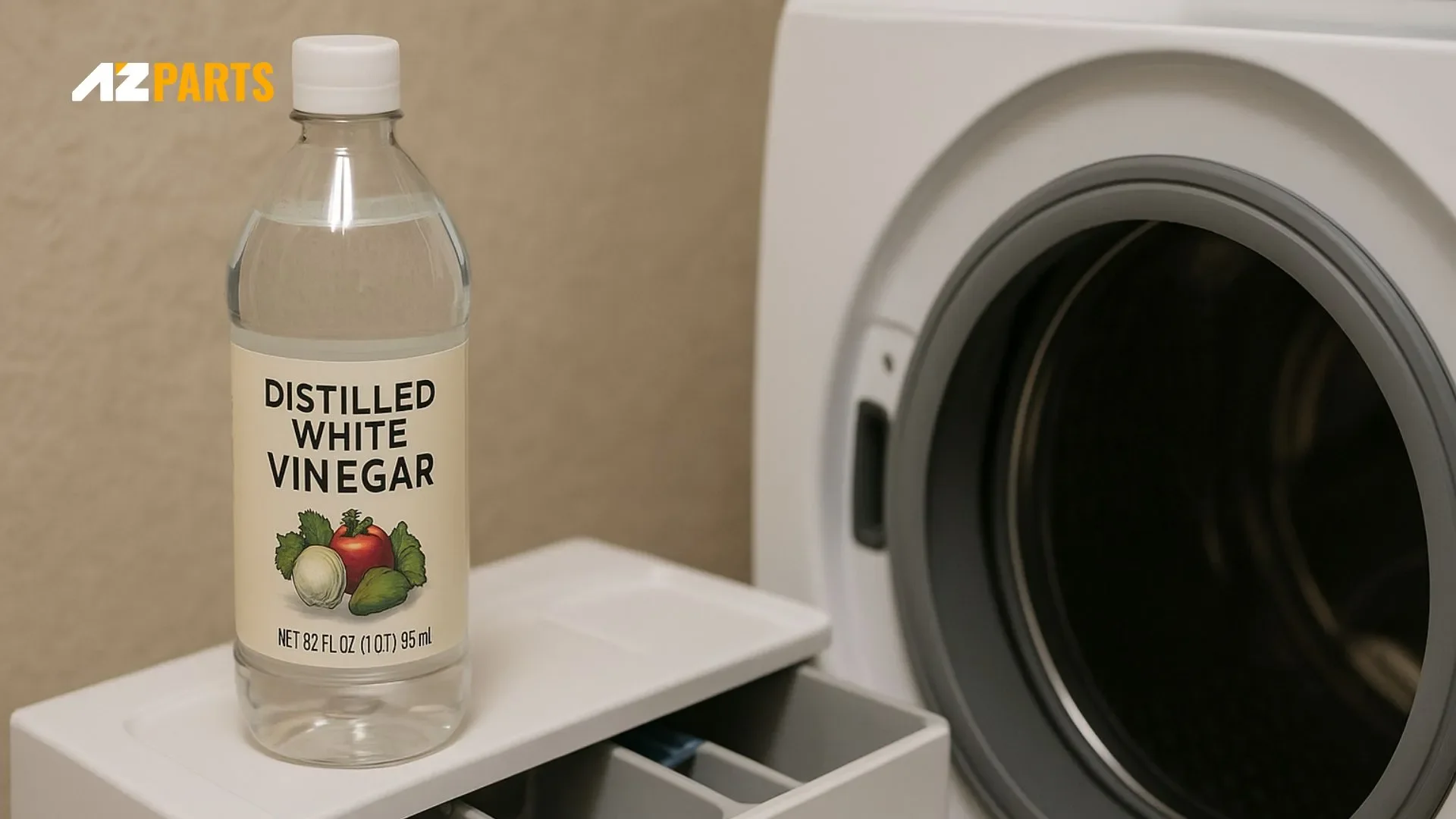
3. Tips for Preventing Mold, Mildew, and Funky Smells
Moisture, detergent buildup, and poor ventilation can lead to unpleasant odors and mold growth inside your washing machine. These practical tips will help you prevent those issues and keep your washer fresh.
3.1. Leave the Washing Machine Door Open
After every wash cycle, leave the door ajar instead of closing it tightly. This allows remaining moisture in the drum and around the door gasket to evaporate naturally, which helps prevent the growth of mold and mildew especially in front-load washers with airtight seals.
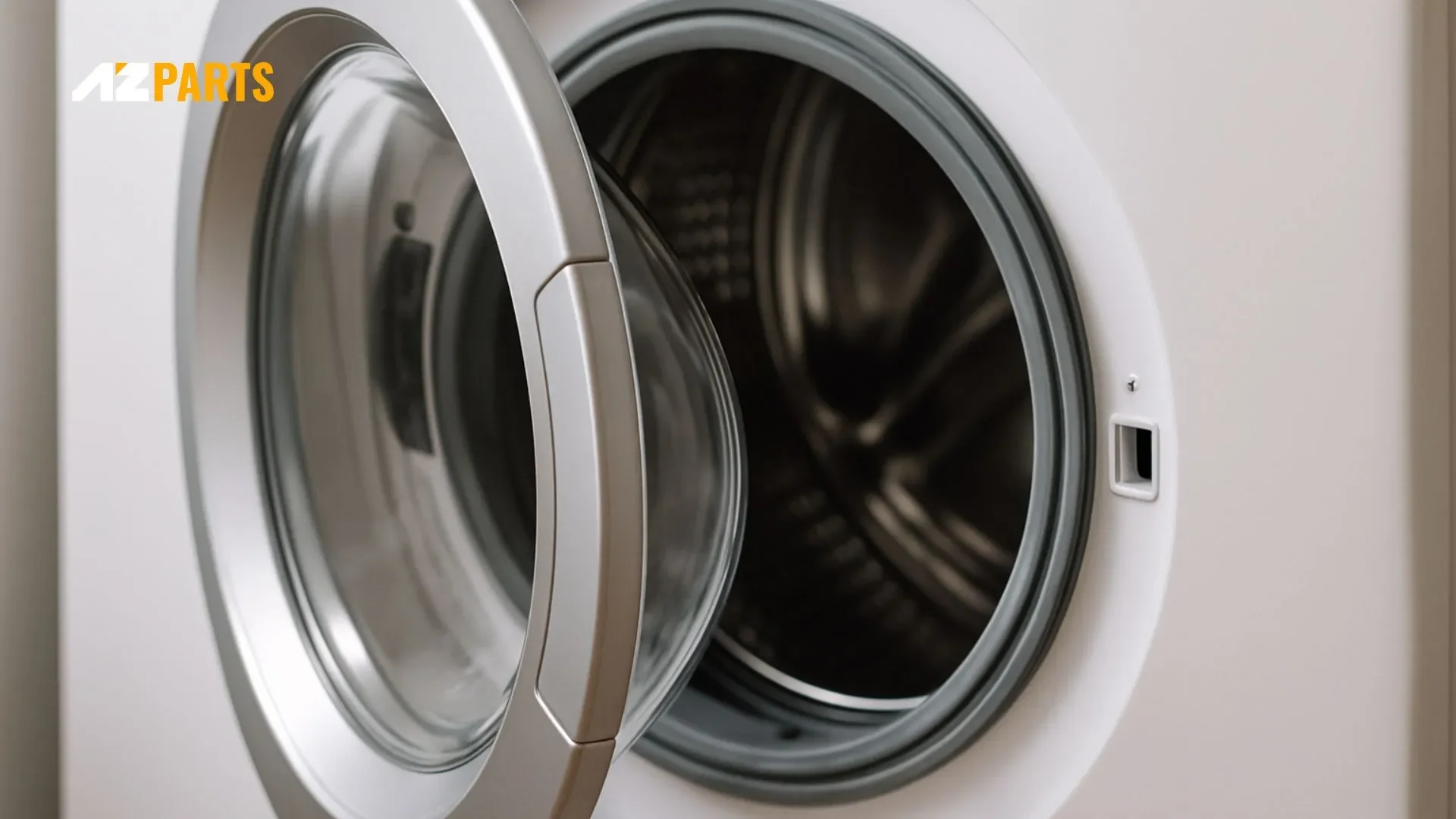
3.2. Keep the Detergent Drawer Pulled Out
Avoid closing the detergent drawer fully right after use. Leaving it partially open allows airflow to reach the damp compartments, helping them dry out and minimizing moisture buildup that can lead to odors or bacteria.
3.3. Clean the Washer Detergent Box Frequently
At least once a month, remove the Washer Detergent Box and clean it thoroughly. Detergent and softener residues often accumulate in the compartments, creating a breeding ground for mold and bacteria. Soak the parts in warm water, scrub with a soft brush, and let them dry completely before reinserting.
3.4. Clean the Washing Machine More Often
Even if the washer looks clean from the outside, internal components can trap detergent scum, fabric softener, and moisture. Run a cleaning cycle once a month using distilled white vinegar or a washer cleaner to sanitize the drum, hoses, and pump. This not only removes hidden buildup but also extends your machine’s lifespan.
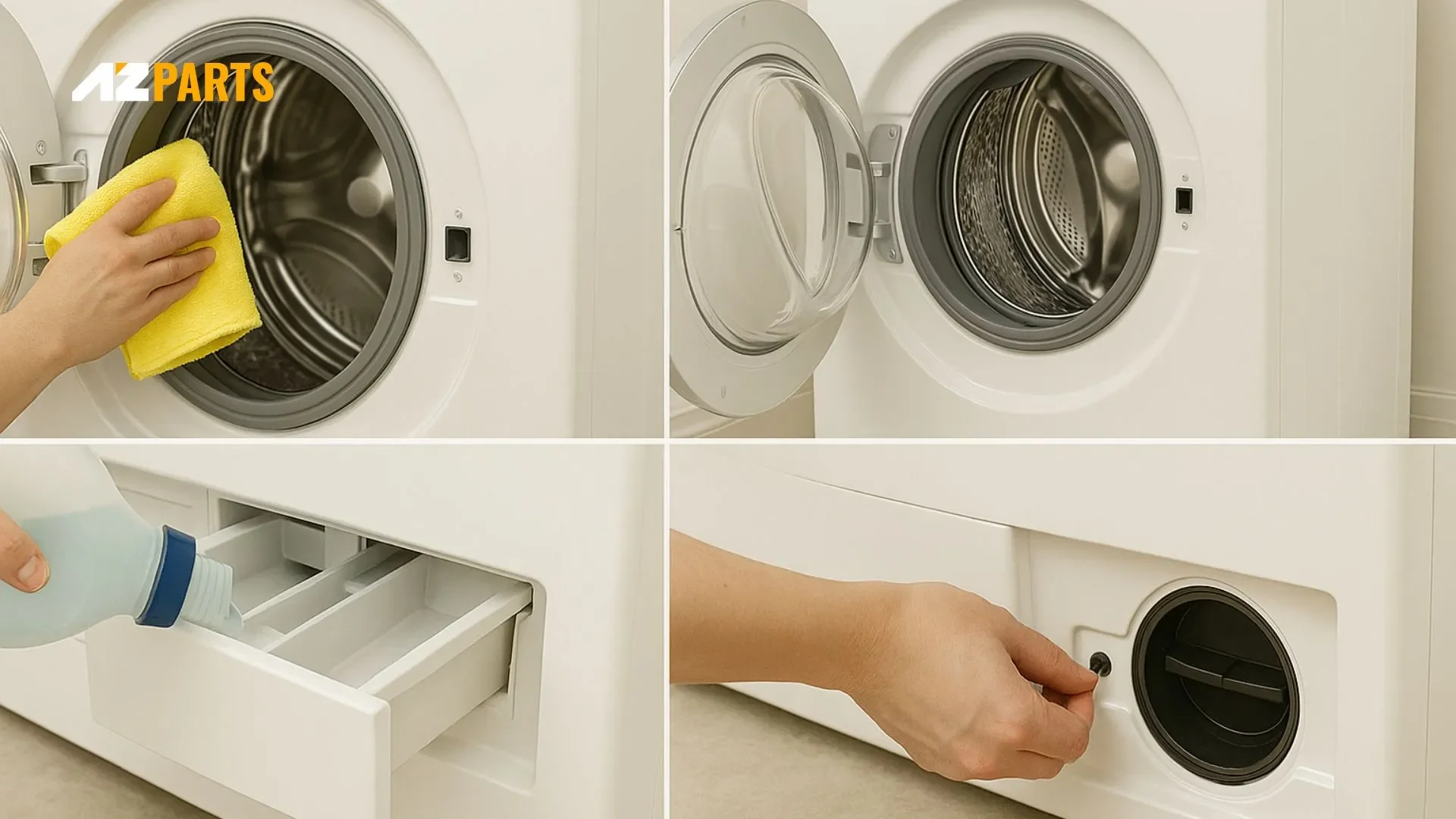
3.5. Quick Tips to Keep Your Washer Smelling Fresh
- Wipe down the washer door seal after every load.
- Let both the washer door and detergent drawer air-dry.
- Use the right amount of detergent to avoid excess residue.
- Mark your calendar to deep-clean the washer and Washer Detergent Box monthly.
- Don’t forget to clean the washer pump filter and washer drain pump regularly (check your model's manual).
Now that you know how to clean a washing machine detergent drawer properly, you can keep your washer fresh, odor-free, and running efficiently. Regular cleaning helps prevent mold and buildup, prolonging the life of your appliance.
For high-quality replacement washer parts and expert advice, AZParts provides everything you need to maintain and repair your machine with confidence.
Contact Information:
8 The Green, Ste A, Dover, Delaware 19901-3618, United States
Find out how to fix different internal parts of your washer here:
Washer
Further Reading
Further Reading





_1748341252.jpg&w=3840&q=75)